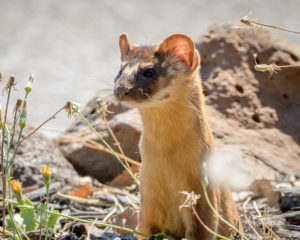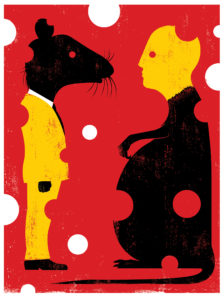The classic “ribbit” that Hollywood used for decades for nighttime frog noises comes from a diminutive two-inch West Coast native called the Sierran tree frog (also commonly called the Pacific chorus frog). If you’re in San Francisco and want to hear them, though, you’re mostly restricted to the movies these days: the city’s expansion in the 20th century filled in the vernal pools of the Mission District where the frogs once thrived, pushing the frogs to the brink of disappearance from the city.
Chorus frogs aren’t a species of particular concern elsewhere. There will be no federal effort to restore them and protect their habitat in San Francisco. But as late as the 1900s they were common there, and for Nature in the City, that’s reason enough to try and bring them back. And there hangs a rather interesting story.
The frogs have small populations still hanging on in natural areas around the Presidio, Lake Merced and the east slope of Potrero Hill, but those are imperiled enough that another potential habitat occurred to the frog-restorers: residential backyards.
Backyard ponds, Nature in the City Director Amber Hasselbring says, are a grassroots action. “Instead of investing in a family pet, we asked people to raise tadpoles and contribute to local species conservation projects,” she says.
So far about 10 families in the Noe Valley, Bernal Heights, Mission, and Haight-Ashbury neighborhoods have joined the localized reintroduction. One family dug a huge hole in their backyard, wrestling with Monterey pine roots to sink a claw-footed metal tub from a recycled building materials yard into the earth for the frogs’ pool.
But the movement hasn’t gained complete traction yet because, as Hasselbring puts it, “nature is complicated.”
For some residents, the small frogs are less than lovable in an urban setting. The frogs have a prolonged breeding season that can last for several months, and most breeding occurs at night. Males sit near the water’s edge, using different vocalizations to communicate with other males and females, so neighbors are privy to the frogs’ affections. They might be small, but you don’t get Hollywood fame without the ability to make serious noise. The frogs are also heard chiming in with car alarms, crooning along with late night jam sessions, and croaking with passing trains.
Neighborhood noise complaints turn out to be one in a series of conundrums at the interface of city and wild life for Nature in the City. But that’s also what makes it interesting: there’s no great instruction manual for reintroducing species that some consider a nuisance back to their turf. So part of the job for Nature in the City and other conservation groups is learning as they go about how to lay down some “pond” rules.
“What we are focusing on is best practices,” Hasselbring says. “What really works.”
Among the challenges they’ve faced is that backyard habitats require time and energy that don’t necessarily fit in with the pace and space of a city lifestyle. There is water quality to worry about, and predators, like raccoons, herons, and crows. Some pond-builders have been surprisingly secretive about their endeavors, worried about vandalism to the fragile environments. “Maybe to find the perfect frog steward, we’ll need to start having them fill-out a questionnaire,” Hasselbring says, laughing.

There’s also a larger ecological concern: dispersed throughout the city, backyard ponds are singular habitats that don’t offer the frogs a free range to roam. This creates what Derek Emmons, a volunteer with the project, calls an island effect. “The frog’s resilience happens in large open spaces,” Emmons says. “Where there are population islands, predators can knock out the frogs. If the frogs can’t roam, people are their stewards.”
There are a number of viable habitats for the frogs: the Presidio, a swale by Chrissy Field, the Randall Museum, Alemany Farm, Glen Park, Pine Lake, Lake Merced, the ponds and lakes in Golden Gate Park, and upland swales at Heron’s Head Park. But even the even more dispersed backyard effort has its success stories.
At Visitacion Valley Middle School, in southeastern San Francisco near McLaren Park, Kids in Parks transformed neglected areas of the school grounds into shallow ponds. The frogs have returned for five winters to reproduce. Hasselbring says the frogs love the dense brush cover, the ponds’ adjacency to a park, and the larger land area. This success has been the exact sort of “best practice” Hasselbring is seeking, with ponds that benefit the kids and the frogs, and an unexpected interaction with nature amidst the complications of the city. It’s projects like Visitacion Valley that Hasselbring says can change peoples’ perspectives about where frogs live and how we can live with them.





